#<- I think it should be changed to rocket science OR booster shot
Explore tagged Tumblr posts
Text

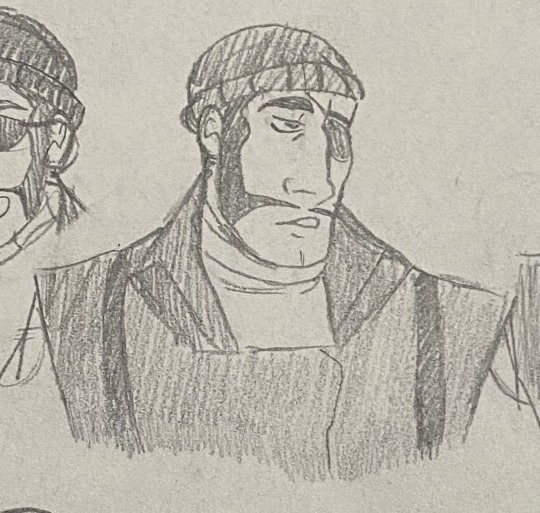


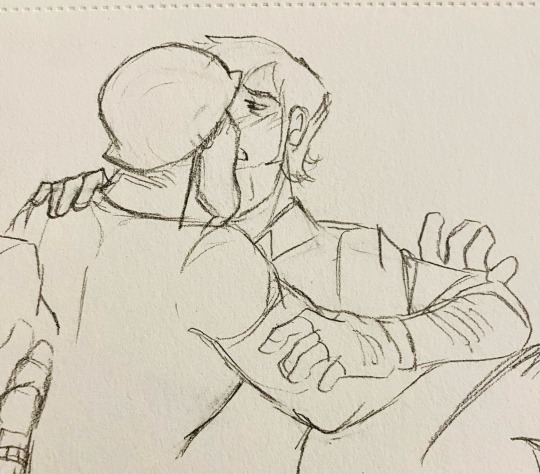

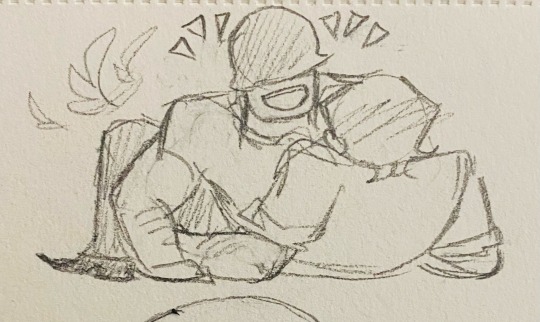

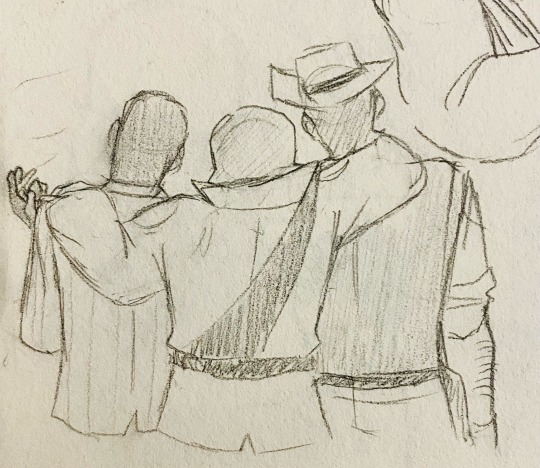
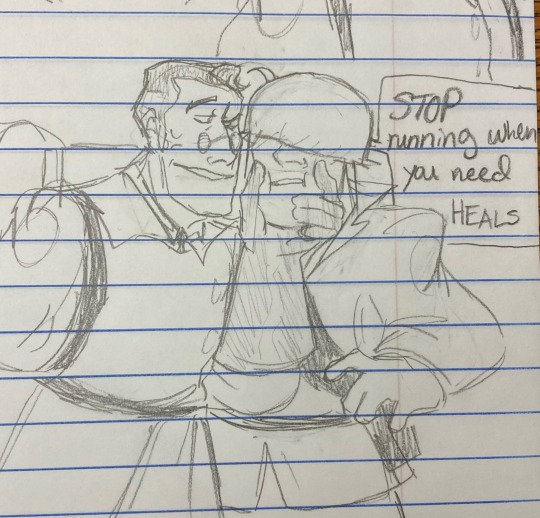
just a bunch of doodles i had lying around
#featuring kissing and a lot of pairings#pretty much every soldier ship is viable in my eyes#he’s great and amazing#tf2#team fortress 2#tf2 fanart#tf2 medic#tf2 demoman#tf2 soldier#tf2 sniper#tf2 spy#tf2 engineer#boots n bombs#freedom fries#american aviators#bloody suit#short fuse#fruit scones#<- I think it should be changed to rocket science OR booster shot#soldierdemo#soldierspy#snipersoldier#sniperspy#demoengie#soldiermedic#art#drawingz by meh
672 notes
·
View notes
Text
Human Qualification- Chapter 19
March 14
Please enjoy the good times while they last.
Thanks to @missmizpah @gracieuxetoile and @deathly-oreos for reading this over!
Summary: To slowly lose all your functions until you are nothing but a trapped mind in a deteriorated shell, that’s what it means to be ‘No Longer Human.’
This chapter can also be found on Ao3 here. Without further ado, please enjoy!
Knock knock. “Hey, Mister Romantic, can we come in?” A nostalgic voice rang through the door.
Having nothing better to do, Dazai had been waiting on stand-by and quickly flung open the door.
The shorter of the two men jumped back a little. “That was fast. Does that thing have rocket boosters?”
“That would be convenient,” Dazai sighed with a smile.
Without another word, the two men, Odasaku and Ango, had made themselves comfortable on the living room couch. They acted as though nothing had changed. Perhaps for them, nothing had. Dazai had met with them on occasion, and each time, Dazai was surprised at how similar they appeared, as though they had been torn out of a photograph of their last meeting at the Bar Lupin. Each conversation picked up as though the previous had only happened the day before. Even as they sat on Chuuya’s sofa, and Dazai, thin and frail, in a wheelchair, they were teleported back to the Bar Lupin.
“On your request, we came bearing gifts,” Odasaku said and gestured dramatically towards Ango, who raised the gifts, flowers and chocolates, with less enthusiasm.
Ango handed the items to Dazai before pointing back to Odasaku. “Of course, we also brought something for you.” Odasaku lightly shook the bottle in his hand.
Dazai’s chin fell. “What’s this? You didn’t need to buy anything for me.”
“We figured you weren’t getting many gifts otherwise—”
“No offense,” Odasaku added.
“Well, what am I going to do with gifts...” Dazai gazed at his lap, his immobile right hand.
“Drink it!” Taking his own initiative Odasaku poured Dazai a glass, then Ango, and finally himself.
“Right now?”
“Why not?” Ango tilted his head. “It’s been a long time since we’ve had a drink together.”
“Alright,” Dazai couldn’t repress a grin. “Cheers!” Taking a slow sip, he let the liquid nostalgia warm his inside. Yet it didn’t go down properly. Something felt off, and Dazai had to force down a cough. Because he didn’t want to interrupt the mood, he masked his discomfort with a smile.
“So where’s the lucky guy?” Odasaku leaned in as if expecting gossip.
“Chuuya? He’s hardly lucky. I sent him away.”
“On White Day? How romantic,” Ango snickered.
“It’s alright. We’ll be gone before he even realizes we were here.”
Their time flew by faster than even Dazai could realize. Somewhere along the way Dazai’s drink managed to disappear along with his unease. He laughed so hard that his chest ached, but that too was dismissed by the merriment.
“I’m home.” Dazai heard Chuuya in the doorway.
“Shit,” Odasaku muttered. “It looks like it’s time to disappear.”
“It was fun, Dazai-kun. We should get together again soon.” With that and a brief greeting with Chuuya, Ango and Odasaku were out the door.
“Did you have fun?” Chuuya sat down on the sofa, stretched his legs across the cushions and, closing his eyes, threw his arms behind his head.
“Before you fall asleep—” Dazai interrupted the beginning of Chuuya’s nap—“I have a gift for you.”
“A what?” Chuuya half-opened one eye. Upon seeing the gifts in Dazai’s lap, both eyes shot open. “How the fuck…”
“That’s not how you say ‘thank you.’”
“Thanks...” Chuuya sputtered, face red.
“I had them delivered.” Dazai smiled, and Chuuya’s eyes, scanning Dazai, the gifts, and the door, widened with revelation.
“Say thanks to the delivery men then too.” Chuuya slowly took the purple flowers from Dazai and then the chocolates, which he placed on the couch. “I guess I should put these somewhere.” He stood up. “They’re very pretty, but um...”
“They’re hyacinths.”
“Yeah, sure, I knew that. So, um, how about I put them on the table? They can help set the mood later.” Even from the other room, Dazai could hear a familiar (and long missed) melody as Chuuya pruned and prepared the flowers. When he returned, he had a lighter step than that morning when he had trudged out of the apartment.
“About the chocolates, I couldn’t make them myself—obviously—but there’s a surprise in there for you.”
“Oh?” Chuuya grinned. “Can I try one?” Without waiting for a response, he was already opening the box. He popped a square in his mouth, and immediately, his face lit up with a smile. “Woah, that’s fucking amazing. You really know my taste,” Chuuya laughed.
“Of course, you’re my partner.”
“I really didn’t think you’d actually pay me back on White Day.”
“You know I would hate to be in your debt.”
“Is that right? Well, I hope you don’t mind if I give you this.” Cupping his chin, Chuuya kissed Dazai. Tasting of chocolate and alcohol, Chuuya’s lips seemed to sing that long-unheard tune against Dazai’s. How could Dazai mind?
“I hope you saved room for dinner.” Chuuya steered Dazai’s wheelchair into the dining room. “I made something special—tempura!”
“That’s not all that special.”
“It is for me; this time I made it!”
“Well, if it’s Tsuuya’s first time, it’s probably dangerous...”
“Is that right? Then you can keel over eating it.”
Although Dazai was secretly looking forward to the meal, there was indeed some fear; making tempura was an exact science, and Chuuya had no practice. Recently, his cooking had been on a good streak, and Dazai hoped that would hold up.
Luckily, Dazai was hungry enough, which meant less and less as time passed. As Chuuya laid out the platter of food, the puffy, yellow crisp was enough to get Dazai’s stomach started. It certainly looked edible. “I see shrimp, obviously. What vegetables are there?” he asked.
“You’ll just have to find out.” Chuuya winked.
“It’s eggplant, mushroom, and sweet potato, right?”
Chuuya stared blankly at his partner, a hint of irritation around his eyes. “Why’d you even fucking ask?”
Dazai laughed. “Alright, let’s eat!”
Despite Dazai’s enthusiasm, eating was unbearable as it was enjoyable. And it was undeniably enjoyable. Each bite was encased in a fluffy yet crispy coating while each vegetable still carried its own flavor underneath. But that was only when he could get a bite. In his quaking hand, the food often made it anywhere but his mouth: his cheek, his lap, the floor… His jaw wouldn’t assist in the effort either; it hung slightly agape and unbudging. It was repulsive. Was Chuuya equally disgusted? Dazai didn’t know; he wouldn’t dare face him.
Assuming a bite made it into Dazai’s mouth, the task of eating was still not any easier. Like a wooden spoon against solid butter, his teeth would grind against each bite; but they were unable to reduce it from its solid state. His tongue moved sluggishly, tasting the food, but never moving it. Thus, each morsel sat still, waiting for the digestive juices to corrode it away. They clogged the sink of Dazai’s mouth, unwilling to go down, so the water would pool and pool, threatening to spill over if Dazai didn’t force everything.
Sharp panic rose from Dazai’s throat. Something was there—stuck—a large object which scraped the walls of his trachea. Only tiny gasps of air escaped in desperate heaves. A flame seemed to burn in his lungs, scorching his trachea and eating up any air. Despite his coughing fit, he couldn’t make a sound. Lurching forward, he grabbed at his throat with his usable hand.
Agonizing seconds later, Chuuya’s eyes slammed open. “Dazai?!” He ran over and hesitantly wrapped his arms around Dazai’s chest. The blue death was growing, spreading rapidly from his lips to his face. One. There was a rapid punchlike impact in his abdomen, which rattled Dazai’s entire rib cage. Two, three, four… Finally, something was ejected, and a huge rush of air entered his lungs. Was it the air or some remaining food which made Dazai continue to sputter?
“Are you okay?!” Chuuya hurried around to look Dazai in the face. With a napkin, he wiped away the half-digested dribble which creeped down Dazai’s chin.
Dazai couldn’t speak; he could only answer with a subtle nod: yes, he was okay—the bare minimum. Nothing felt okay—not his scorching throat, not his exhaust lungs, not his frantic heart, not his scrambled brain—but he was alive. Instead of words, he used sighs, which conveyed relief, fatigue, and a multitude of feelings he couldn’t understand.
For a while, Dazai and Chuuya sat frozen in silence. Occasionally, Chuuya would eye the remaining food, but neither of them wanted to touch it. The savory smell had become oppressive. Finally, Chuuya, who had been shifting oddly in his chair, cut through the grim air. “There are still a lot left. Do you plan on eating anymore?”
“Nnnn.” Dazai couldn’t eat it. If he didn’t choke, he would certainly throw up. His stomach roiled at the thought. Even the lingering aftertaste, once so sweet, was bitter, a haunting memory. If Dazai could wash it away with water, he would, but he feared even that.
“Me neither. I’m going to clean up.” Chuuya rose from the table with a dish in his hand. He gazed at Dazai piteously before turning away to the kitchen. Dazai did nothing, watching lifelessly as the evidence of what happened disappeared. Nevertheless, the horrible memory persisted.
← Previous All Next →
#Bungou Stray Dogs#Soukoku#Human Qualification#Dazai Osamu#Nakahara Chuuya#Oda Sakunosuke#Sakaguchi Ango
18 notes
·
View notes
Text
Netflix Challenger Doc: How The Filmmakers Found Redemption and Optimism From Tragedy
https://ift.tt/eA8V8J
The Challenger space shuttle explosion in 1986 was one of America’s most visceral tragedies. In real time, millions of Americans, including school children across the country, witnessed the shuttle disintegrate from a solid rocket booster failure, claiming the lives of all seven astronauts on board. The mission was of particular national interest because a high school teacher named Christa McAulife was selected to become the first private citizen in space, leading to increased media attention and fanfare.
Countless shows, documentaries, and books have covered all angles of the NASA mission gone horribly awry. Netflix’s new documentary series, Challenger: The Final Flight, stands out by telling the human stories behind the accident, including first-hand accounts from the decision makers at NASA and the astronauts’ families whose lives were changed irrevocably on the morning of January 28, 1986.
The project hails from J.J. Abrams’ Bad Robot Productions and executive Glen Zipper, and was co-directed by Steven Leckart and Daniel Junge (who won an Oscar in 2012 for Saving Face). Over a recent zoom call, Zipper, Leckart, and Junge told Den of Geek about their personal memories of the Challenger explosion. Zipper and Junge recall being pulled out of class and shown the shocking footage by their teachers. Leckart says he was young enough that nobody quite knew how to talk to him about the disaster.
“This project for me personally was a way to try to understand something which actually was very deeply unsettling to me at a young age and actually shattered my own dreams about space and astronauts,” Leckart says. “That was my first experience of death, and it was a very strange way to come to terms with, “What does that mean, that they’re not coming home and they’re not coming back?” It’s an unsettling thing for a child to watch.”
Across its four episodes, Challenger: The Final Flight memorializes one of NASA’s most diverse flight crews and contextualizes the scientific and bureaucratic failures that led to the disaster. In the Q&A below, Zipper, Leckart, and Junge reflect on the emotional interview process and ultimately how they found a story of redemption and optimism borne out of national tragedy.
Den of Geek: How did you decide on tackling the Challenger disaster as your next project?
Steven Leckart: In 2015, we had finished our second project together. Glenn just said, “Well, I think our next project together should be something really personal to both of us, instantly personal.” The second he said “Challenger,” I said, “I’m in. That sounds fantastic.” Because I’m just old enough that I witnessed that moment in time in elementary school, but I’m also just young enough that I really never fully understood what had happened, and it was just a great opportunity to dive in.
Separately, Daniel and I had met around the same period of time when we started talking about Challenger. We were introduced through someone else in the doc community to try to work together. That didn’t wind up happening. By the time this project came back around and Daniel was suggested as my co-director on the project, we’d already knew each other and had wanted to work together. It was serendipitous.
Daniel, did they drag you in kicking and screaming?
Daniel Junge: No, none whatsoever. It’s a no-brainer when you have a meeting and the first thing they say is Challenger and you go, “I’m in.” Our first pitch was to Netflix and we felt pretty confident there and then that they were going to do it.
I’ve done a lot of co-directions, but I think this one benefited from a lot of intense, vigorous discussions because it’s such a complicated thing to do a series like this. I think we both agree that had either one of us done it solo, it wouldn’t be as good as it is because of those spirited discussions and the fact that there’s a lot of moving parts here. There’s history, there’s science, there’s personal backstories, there’s politics, and there’s controversy. Balancing all those came from not just the two of us, but a whole team. It got heated at times, but I think for the better. It never did come to blows.
Glen Zipper: Neither of them has ever got hit by the other, but that’s because I got between them and I got punched in the face a few times separating them.
Steven Leckart: In all seriousness, joking aside, one of the things that was such a benefit to having a co-director… the interviews are so emotional, some of them, and we shot some of these interviews two on the same day. To have two directors able to jump in the chair was, I felt, really useful in some respects. You just sit with somebody’s pain and emotion and you’re just wiped. To have someone else there to step in and help break up the load was incredibly useful.
What did you guys look to achieve with Challenger that would set it apart? There are so many rich, interesting threads to pull on thematically. And how did you want to approach it from a visual standpoint?
Once we were starting to figure out the structure, we started to talk about how we were going to capture the interviews. We knew it was going to be an archival heavy documentary, but we knew that it needed to feel big and cinematic, as far as the cameras.
Glen Zipper: Steven should really speak to the granular specifics of it, but I can set the table by saying it’s interesting, observing us talk about the series and the various interviews that we did. We keep slipping and calling it a film. It is a series, but to us, it really feels like a film that’s split into four parts.
When we looked at all the other Challenger stories that have been told before, the other documentaries, there’s a storytelling reason that explains why this project is so different. But also, none of us had encountered a telling of the story that felt like a rich cinematic experience. That’s something we all agreed that we wanted to bring to the table, and I think something that Daniel and Steven did a wonderful job of executing on.
cnx.cmd.push(function() { cnx({ playerId: "106e33c0-3911-473c-b599-b1426db57530", }).render("0270c398a82f44f49c23c16122516796"); });
Steven Leckart: The first thing out of the gate, we started talking structure and story before we talked about execution, and we arrived at the four episodes. We knew where the set pieces were going to be. We knew we wanted to start on the day of the launch. We knew we wanted to end up episode three with the actual explosion and hold off on showing it.
I remember Daniel and I were talking and I said, “I think we should shoot three cameras because I think we should go to camera, but use it very sparingly and only when we’re mostly talking post-explosion.” The idea was that you would live in one episode, two episodes, and then suddenly you would ratchet direct to camera and be super tight. Filmmakers would know what we were doing, but the average viewer would just feel like something changed, but they wouldn’t be able to put their finger on it.
Daniel agreed with that because it was an interesting premise, but then he said, “I think we should shoot a fourth camera and we should have this moving shot, this slider.”
We wound up with this setup with four cameras, which I’ve never shot a doc with four cameras. It’s not full Wormwood where you’re really shooting the heck out of it, but I think it allowed us to play visually in a way that was really satisfying and interesting in the edit. Some of the sliders cut moments and monologues that, just by sheer chance, were phenomenal. I think that’s the direct result of two directors coming with very complimentary but different visions, and then looking at together how they all played out.
Netflix was great to trust us and give us the budget to do it. But to the earlier point, this had to be bigger and it had to be ambitious, and that also led us down the path of recreations and really trying to do that in a way that felt tasteful and interesting and cinematic. We shot a lot of stuff we didn’t quite work in the edit, and we had to be painstakingly honest with each other about, does this work? Does this not work? Why is this falling apart for us? But the stuff that made the cut, watching and rewatching it, I think it feels great. I think it looks great. I think it doesn’t pull you out of the moment.
What aspect of Challenger were you guys most interested in exploring going in? And did the research and interviews take you to any unexpected places?
Glen Zipper: The one thing that jumps out at me is in our early discussions around the project, we talked to people of our generation and the generation before us about their memories of the Challenger, and everyone has an indelible memory because it was such a traumatic event in our history. Everyone thinks they have a full understanding and knowledge of it. It’s very personal to them. Then we say, “Do you remember who the astronauts were?” Their answer would be, “Yes, of course we remembered all the astronauts are.”
Then we’d politely say, “Can you name them?” They’d say, “Yes, there’s Christa McAuliffe, and then there’s…” And they trail off. They were embarrassed to realize that they didn’t know who these other astronauts were, and sometimes even shocked.
That gave us the creative impetus to want to tell a story through the perspective of these astronauts and their families. These were human beings with lives, passions, ambitions, talents, and people who cared about them. We’ve lived with that image of Challenger exploding for so many years that we become desensitized to it.
What Steven and Daniel have done so well is they’ve reacquainted you, and in some cases acquainted you, with these characters. By the time we get to the accident in the third episode, that image takes on a whole new meaning to you. You’re invested with those seven souls who are on the Challenger, and when the inevitable happens, when that tragedy happens, it’s gut-wrenching in a whole other way.
Steven Leckart: I remember the conversation we had in which it was,”Okay, who are these other astronauts? Let’s look at them. Let’s start to unpack their histories. When did they come into the program? Who were they beforehand?”
When we first struck upon this idea of [NASA Group 8 in 1978] and what they represented in terms of opening up space to women, people of color, multiple religions, and doctors and scientists, not just white fighter pilots. When we realized that we could thread the needle and tie the shuttle to that dream of opening space up for everybody, and then we made the connection of who wound up on the Challenger, and then of course the Challenger even opened the door further for Christa, it really felt like there was a very clear arc in continuation between that big idea.
I realized that whether you were alive or not, that is as relevant today as it was 35 years ago. I think people who are younger will hopefully identify and see how just amazing and inspirational that moment was. We’re now standing on the cusp of more space exploration. The idea that it’s not owned by one country, or one gender, and all of that is super important. I’m hopeful that the series, aside from the tragedy, reminds people of that.
The biggest surprise for me watching the doc is how cooperative the NASA officials were, including ones in positions of leadership at the time. Could you tell me a little bit about what that process was like, requesting those interviews and ultimately asking some really, really hard questions?
Steven Leckart: We explained our vision for the series from the beginning, and it always came from a place of sincere curiosity as well as love for the space program in general. Our goal wasn’t to crucify NASA or the agency. We didn’t see this as a story of good guys and bad guys and were hunting for a villain. We already understood that the Challenger is very much a story about systemic dysfunction and bureaucratic organizations, and those people are put in very tough positions, oftentimes not by their own making and their own doing.
We were very clear with people from NASA. This is what we’re out to accomplish and we want to hear directly from you. We made it clear that we were not going to be interviewing people who had studied it and written books, but didn’t live it. We just wanted them to be able to share their experience in an open and safe forum, and we created a space for them to tell us whatever they felt comfortable telling us. Ultimately, that’s what you see on the screen, is a very honest and sobering, as you put it, revelatory experience.
There isn’t necessarily any new information. The commission pretty much covered most of it, but it’s in the candor of the interviews you really start to feel that this story, although it was put to bed so many years ago, hasn’t necessarily resolved for some of these people.
What was it like on the flip side of that? For the astronauts’ families it’s obviously such an emotional thing to talk about. Can you tell me a little bit about what that experience was like shooting those interviews, and being so close to people whose lives were so deeply affected by this?
Glen Zipper: I have done plenty of films on dark subject matter and tragic stuff. None of it has been this far in the past, so I think it was surprising to me how ever-present those emotions are for these subjects. These interviews were at least three hours. Some of them took all day. Question number three was, “Tell me about that day.” Often we wouldn’t get to that until hour two, hour three. I think at that point they were really ready for a watershed and really, I think, prepared to share.
Daniel Junge: I think that’s right. For the people who have done press before, they told us afterwards that it just felt different. Not different just because there’s four cameras, but different in terms of the tone and the tenor with which we conducted those interviews.
Then for people who have done very little media, I think they confessed and have confessed since then that doing the interview actually helped reconcile some feelings for them. I think at best, documentaries can be almost like a form of therapy in a way, and it’s free. You don’t have to pay for it.
Steven Leckart: But we have talked to some of the family members, or actually all of them who we interviewed, and the response we’ve received from them on the series has been overwhelmingly positive. Very few people at this point in time have seen the series. We don’t know what the public at large will feel, but I know for me, the sense of relief that I personally have, that they feel that we did the story justice and did right by them and their family members, that means the world to me. Whatever happens [when the doc releases on Netflix] and moving forward, at least we know that we did right by them.
Were there interviews you guys sought but didn’t get access?
Steven Leckart: There is one astronaut family that we were hopeful to include. They declined to be interviewed. We’re not exactly sure what was happening there, but we made every effort to basically bring that character to life through his NASA colleagues and friends. I don’t think if you watch the series you would feel like we’re missing anything.
The final episode is so powerful. The most emotional part for me was actually seeing the hopefulness come through towards the end, for what this meant for the space program, and what this meant to the families to see NASA return to space after the tragedy. Can you tell me a little bit about post-production and how you nailed down the message of the final episode?
Daniel Junge: We always intended to end redemptively, not only because it’s just a bummer, but because it is ultimately a redemptive story. I think that you have to remember over hundreds of safe flights of the shuttle, most of them after Challenger, means they got some things right and they did some amazing stuff. We want you to get a sense of that both before Challenger and after that. But also when we were constructing it, sometimes you have to muscle things in post to make them feel a certain way, it just spoke. It was redemptive just watching it dry without music. It’s so clear.
The post Netflix Challenger Doc: How The Filmmakers Found Redemption and Optimism From Tragedy appeared first on Den of Geek.
from Den of Geek https://ift.tt/32FziV5
0 notes
Text
Slowly towards completing Step 2 and starting on Step 3
Status Update
I've followed up the Rainbow-01 satellites with new more streamlined Rainbow II, this satellite is smaller and it's far easier to pack multiple of them aboard a single mission. The Rainbow II should give me a great idea of the kind of satellites I'll need to likely bring 4-8 of on the prep missions prior to the final Jool mission.
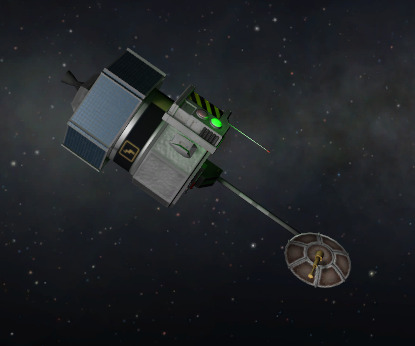
Rainbow II satellite
There won't be much to change in this design for quite some time as the OKTO2 is the only thing that's going to lighten it up--though I may consider going to ROUND-8 tanks if there's enough Δv in them.
Other than that, I've launched 3 small probe science missions as part of the DBuster program. Two probes were sent to the Mun and the third to Minmus after the first two probes determined that the LV+delivery system had more than enough Δv to handle the trip with fuel to spare.
And on that note...
RCS engines are not so bad, but they are bad
I'd always known about RCS engines as an ultra-light low thrust alternative to parts like the 48-7S and LV-1 Ant, but had always done the mental math as "well, it's clearly going to be heavier because there are more nozzles." Still, no time like the present to try it out, eh?
The current Dbuster program probe, which has flaws (namely, 2x RV-105 instead of 4x, what was I thinking?), looks like this:
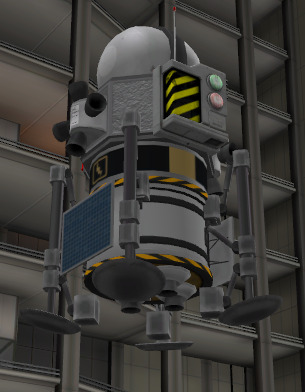
DBuster I in the VAB
This probe's 4x Place-Anywhere 7 RCS ports and 2x RV-105's provide 10kn of thrust amounting to 792 m/s Δv with 0.315t in fuel from a single Stratus-V (I'll probably have to add more thrusters later)
For the weight, you'll all agree, this is terrible! An Oscar-B tank + LV-N? 2.23 TWR (Thrust-to-weight ratio) with 1400 Δv, Oscar-B + 48-7S? 19.5 TWR + 1200 Δv (the RCS thrusters in the example yield about 10~ TWR thrusting aft)! So what's the edge? Landing safety, and only landing safely, exclusively and entirely only and exactly landing safely.
There is no other upside.
650 Δv is more than enough to hit the ground at the Mun or Minmus, and with the RCS thrusters you gain 100% control over the ship as it comes down. My three test flights, while far more expensive than regular engines, had 0 difficulty landing or adjusting their landing zone once down. A polar landing that would have put me in shadow below a hill with a standard engine (or with a requirement to do some dangerous hops, constantly fighting to zero out angular velocity while stabilising from a hop) with the RCS thrusters I was able to slide sideways on descent and land squarely on a comfy plain nearby.
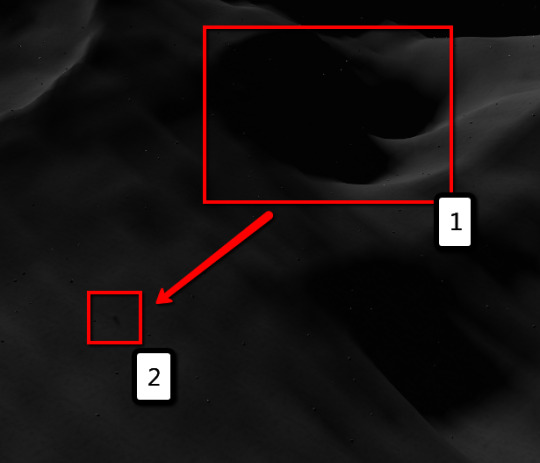
1. Initial landing location. 2. After adjustment landing location at 79° 41' 12" N by 3° 27' 57" W
So for 14x the price you can guarantee a safe landing in an optimal location. I enjoyed my fiddling with the RCS engines and can recommend them firmly on ease of use during descent -- however, anyone more price-minded should absolutely steer clear. Reaction Systems Ltd. and STAEDLER Engineering Corps have completely failed to deliver cost-effective engines... which makes sense because these things aren't engines..... so good on them I suppose.
Satellite alignment for optimal constant coverage.
IT WAS THIS EASY THE WHOLE TIME?
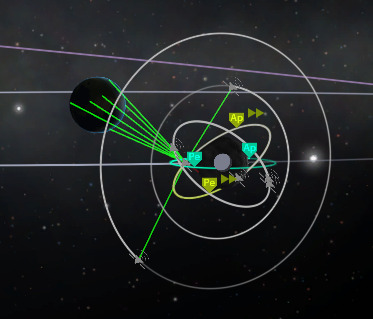
The inner two axes have the 4 Rainbow II probes. One at 45° degrees and the other at 135°
Set yourself into an orbit that is exactly some #of hours, for example, 2 hours, once into that circularised orbit break off a relay and burn up to an orbital period of 3 hours.
As soon as that's done, set your node to circularise at your periapse again.
This will allow your first relay to travel halfway around it's orbit, then slow yourself on the other side.
With 3 probes it's about the same idea, except you add 40 minutes (putting you 40m behind, or 1/3rd of 120 mins) and then run the orbit.
I can't believe it was this easy. Thanks to Youtube channel Matt Lam for the tutorial that finally put it all together for me (I've set this to approximate start of the important bit)
With a total success around the Mun we've just got to send the Minmas probes next and then step 2 is complete.
A final note: I've gone with this pattern of two axes to try and guarantee signal to all parts of the Mun at once, if 2 craft on 1 axis are at N and S pole, then the 2 craft on the other axis are at W and E poles, giving nearly total coverage. Obviously my setup didn't go perfectly but Minmus is the goal and that's where it needs to be perfect.
Electrolux II and the Rainbow II mission.
Almost immediately after developing the Bissel II I mirrored the success by creating the Electrolux II, a medium lifter capable of carrying 3x the Bissel's load into orbit. I did opt for less Δv to spare by using a pair of BACC Thumpers, but at $21,000 and utilizing 2x Advanced Inline Stabilizers I felt I was already pushing the limits of cost effectiveness as I know I'm able to move that payload to orbit for 15k or 16k from past experience.
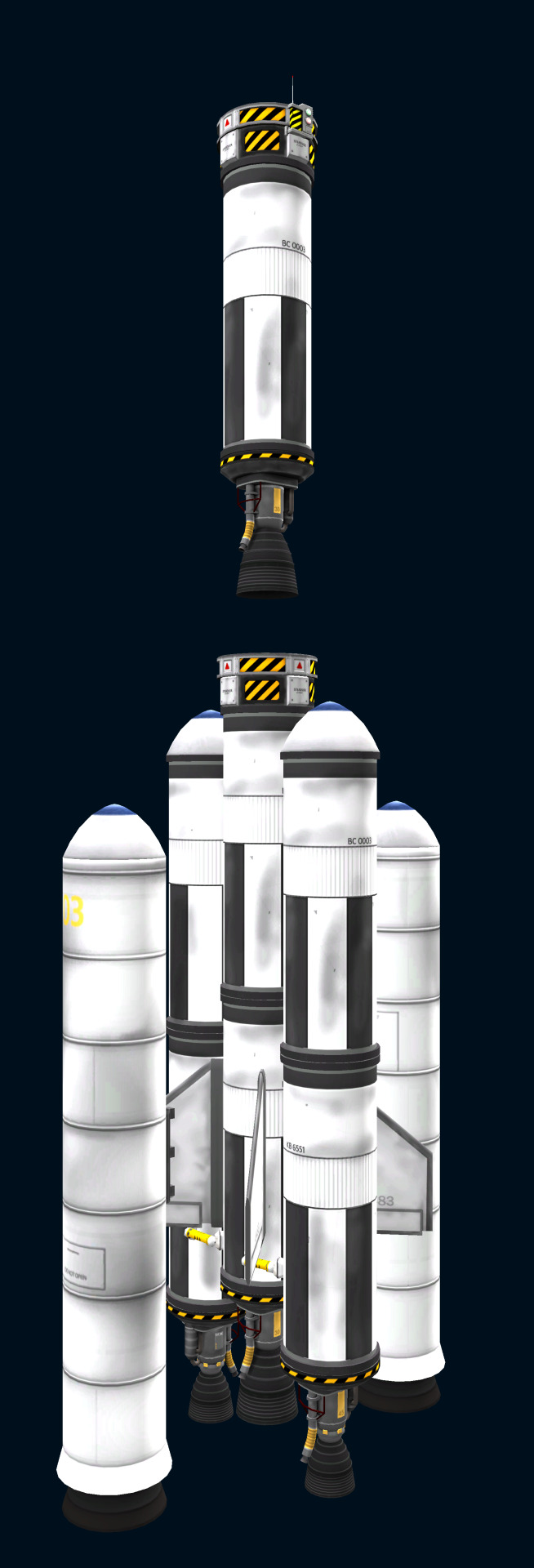
The Electrolux II-01-LV.
What's the real difference? The Electrolux II is the same base shape as the Bissel, but with double the fuel and an LV-T30 as the central engine. The BACC boosters fall away and the first stage has fuel pipes to equalise the fuel supply, guaranteeing they all run out at the same time and fall away together.
I chose to develop the Electrolux II so quickly because of the MIGHTY need to move 4x Rainbow II satellites into an orbit at the same time. I wanted to make sure I had enough fuel in the second stage to do multiple fairly significant inclination changes once in the desired moon's orbit. I figured an LV designed to lift 7.73t into space lifting a payload of barely 2.5 (the individual Rainbow II sats are 0.48t) would end up with a ton of Δv remaining, and I was right, the Rainbow II mission entered Low-Kerbin Orbit with roughly 2000 Δv remaining, practically the entire second stage's fuel supply.
The Minmusian landing was actually driven to action by this mission (ah how things fall into place) as I'd completed the Rainbow II satellites and the Electrolux II but was uncertain if they'd be aerodynamically sound without a fairing - surprise they were not. I could not manage to keep any of the earlier Rainbow II test flights stable and eventually had to launch launch DBuster 3 to Minmus to gather the science required for the AE-FF1 Airstream Protective Shell.
The results were not pretty, but eminently stable, as the four probes on top of each other stacked higher than the fairing wanted to go so I had to resort to a four-leaf clover shape (as an aside, I love the internal attachment points on fairings! I need to find a way to use those!)
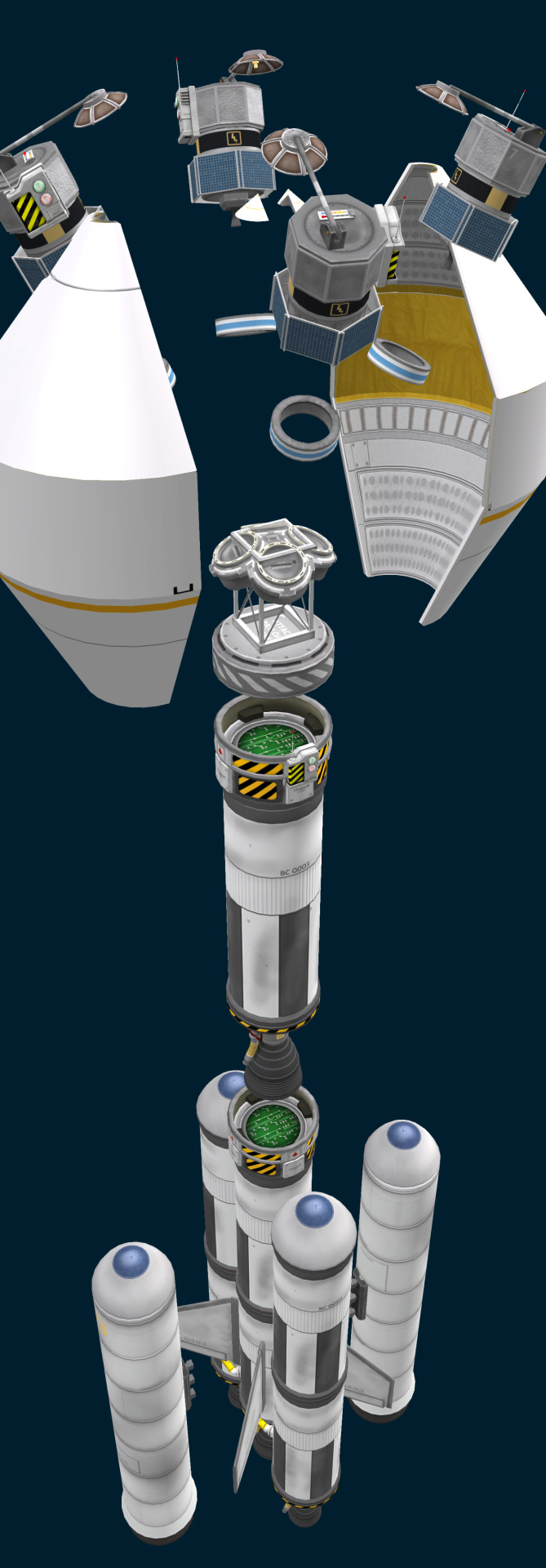
Okay let’s try a grossly high-quality image here then. On a personal note I love that all the antennae fit together snug but don’t touch.
This somewhat awkward layout is fine as the Rainbow II mission releases 2 probes on the same orbit anyway, then rotates 90° to release the other two, maintaining comfortable stability.
I'd say the downside here is the Electrolux II's second stage is meant to be a second stage, not a craft capable of operating independantly, thus it has no CPU, turning it into space junk once the communication satellites are launched. Nuts.
In it's current arrangement, a single Rainbow II program mission launch costs $10,409 per satellite put into orbit.
The Infinite Possibilities of a real open world - what's next?
I need a bit more cash, so I've accepted satellite missions for Goliath National Products, StrutCo, and Kerbal Motion LLC. None of these three satellite missions are particularly difficult, and will likely lead to me putting another 300k~ in the bank. This will provide me the cash needed to comfortably upgrade my Research and Development facility.
That's the real big thing though, once I hit R&D level 2 the Kerbol system really is my tiny green cartoon oyster. Once the R&D facility is upgraded I think I will attempt 4-6 more DBuster missions to the Mun to acquire Advanced Electrics, Advanced Exploration (and pre-req. Space Exploration), and then Specialised Construction. This new science will allow me to start putting space station parts up (starting with the science station core) that aren't terrible, using Clamp-o-Trons, BZ-52s, and empty fuel tanks (what!? I'll have Cubic Octagonal Struts some day!)
That segues into the real challenge: mid-term science acquisition to unlock all of the scanning and other science equipment. I'll do as much of this as possible before mounting some fairly major science missions within the Kerbin system, lugging every bit of science equipment into orbit, perhaps on a reusable system, before finally merging that craft with the station I've built.
This sets up a great situation for mining, fuel processing, and storage to be added to the station to create that lovely "all-in-one" station.
During this period of rapid growth, I'll need to find time for rescue missions and station missions, rescues are a fantastic source of free Kerbals and station missions are simply bursting with $.
I'll also need to start thinking about reusable craft for science gathering.
Yes, we're almost at the interesting bit.
+ What did we learn?
RCS thrust is pretty alright for a lander, but the cost is extreme compared to traditional LFO systems.
I am on the cusp of "the big part of the game" and I haven't even left Kerbin influence.
Parts drag is as real as it ever was, don't try and stick 40~ parts at the top of a rocket with no fairing.
Oh my gosh comm networks are so much easier than I thought.
+ N.B. and mods
I've removed USI as it is simply too much part clutter. Kronal Vessel Viewer (KVV) I've finally found a version that works and will be giving money to LinuxGuruGamer as soon as possible in thanks.
Sorry there weren't many pictures, here's some shots of earlier vessels exploded in Kronal Vessel Viewer.
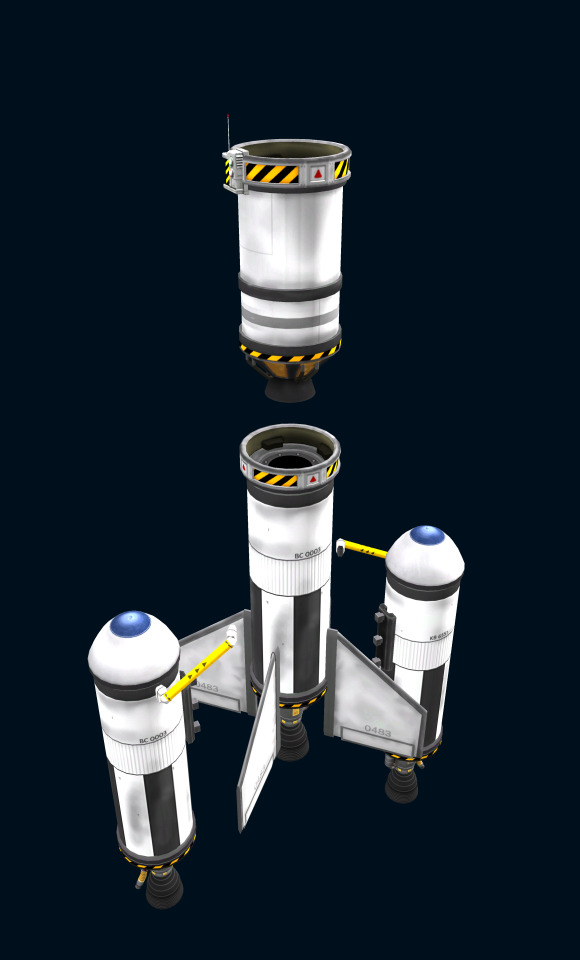
Bissel II-01-LV
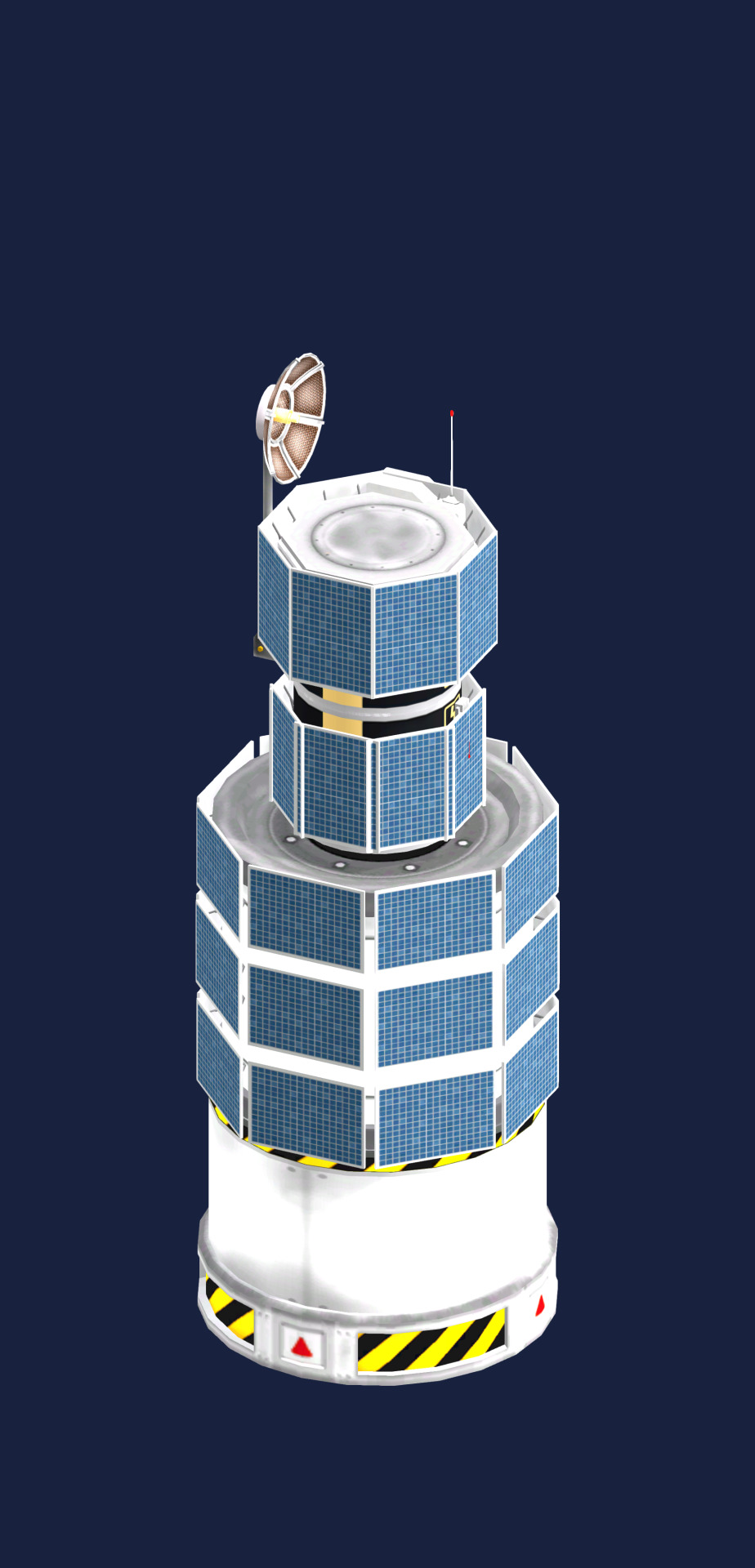
The defunct Rainbow 01.
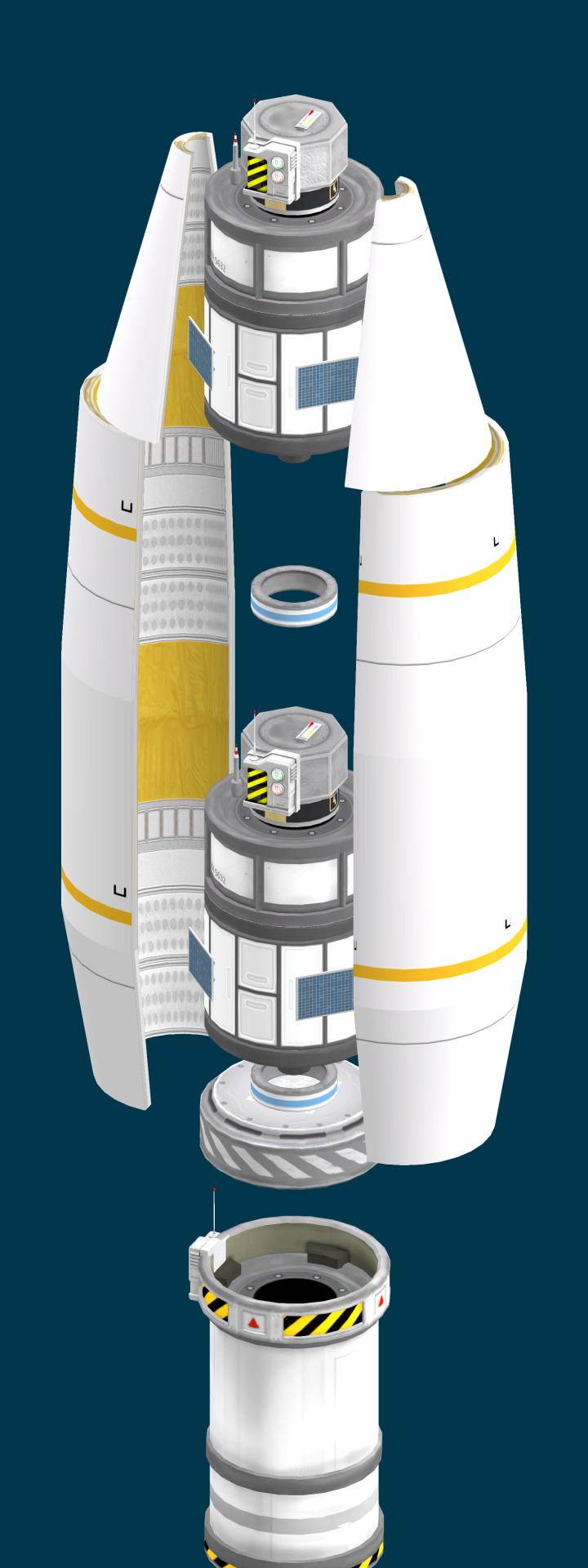
A preview of the section for the Goliath National and StrutCo satellites, nothing exciting here.
2 notes
·
View notes
Text
Thanos the Rad Titan - Blast IT, not THEM! (Chapter 10)
Chapter 1 or ( Part One ) Chapter 2 or (Part Two) Chapter 3 or (Part Three) Chapter 4 or (Part Four) Chapter 5 or here
Chapter 6 or here Chapter 7 or here Chapter 8 or here
Chapter 9 or here
That’s me (and also here)
So, we’re at the starting line. There’s so much tension coming, going and colliding, feels like there’s going to be the birth of one new universe. Or we’re all just going to implode, dragged by our very own charged emotional baggage and high stakes.
Thanos keeps tinkering with the thrusters and booster engines. I'm feeding off the noise.
‘You think we can outrun this guy? ‘Cause to me, he’s the type of guy who’s fast enough to make parcels look like time units.’
‘Whelp, if I were you, I would let me think and charge these thrusters to maximum capacity. All you need to worry about is keeping me on board, because if we lose, I shall grand your head to my parasites as their new toy.’
‘Wow, aren’t you motivational,’ I grovel, doing lunges and stretches. I practice some manoeuvres with my own board and then I hear Thanos’s begrudging roar of impatience.
‘Let’s race!’
‘This one will be remembered,’ Silver Surfer says, crouching and looking bullet-like.
‘You got that right,’ I growl, getting on Thanos’s board once more. I take a deep breath and try to get into some kind of racing mentality. ‘It’s now or never. Let’s just rev up, pump up and blast this.’
I try doing some meaningful breathing, hoping to purge myself of stress and extra tension but it’s no good. I’m hooked on the board.
Navvir says he’ll shoot a flare and when it dies out, we’re off.
The Silver Surfer fires his shot and it travels brilliantly around the planet. It keeps going until it’s no more, its energy spent.
Just like that we’re off.
I guess from behind we must be rockin' the whole flare look, like Navvir’s flare, ‘cause damnit we are blazin’ fast. I fashion my telekinetic control to be thin and webbed tightly all over the board.
‘Come on,’ I growl as Space Kahuna takes the lead. The more I push, the more it grows on me: an emotion of burning up, like there are wicks coming out of each one of my pores and slowly, painstakingly, they catching fire.
I keep my head down and try to maintain stability and smoothness. Even though I’m used to sudden speed bursts and the device Thanos had given me is fruitful protection, after that second burst, I’m experiencing this whole thing of skin peeling-off.
‘First turn. Hold on, Titan,’ I growl through gritting teeth as I sharply force that turn. We cut Silver and take the lead. Adrenaline’s blasting all the way up to my ears.
‘If the next corner is as sharp as this, we’ll chop that planet’s moon in half,’ Thanos says and I shoot him a feeling glance.
He’s actually leaning, looking hungry and be on the pray for the victory.
‘You’re enjoyin’ this, ain’t you?’ I grovel, pushing me and the board some more. His cape is flapping, highlighting him with a slow-motion finale, as its tips pierced the gravity/atmosphere bubble. I stretch my head forward, in my mind looking like that figurehead of a ship.
Silver dashes to our side, leaving one continuous trail of nigh-endless energy. Thanos roars and I fell the whole board shaking and rippling as we go in another speed blast.
‘Second turn. Here we go.’
Sure, Thanos would kill me but his? Right there? The worlds are hurried blurs that I wouldn’t see but still, in my head it’s kind of encouragement to keep going.
‘One more planet and the asteroid field till we taste victory,’ Thanos howls with some timbre blooming in his voice, which I could identify as joy.
'Sure, no stress,' I growled, kissing my teeth.
My heart keeps pushing itself and I’m pretty sure that my pupils are dilating to limits never reached before. My body’s getting that feeling like an eyeball that hasn’t blinked for a long time. Tenderness is slowly growing to rawness and then in a piercing physical pain, as I snarl to push some more for an extra thrust, with Thanos blasting plasma fire from his fist, for even more speed.
After the second turn, we are leading. My hair get a gradual feeling of sparks are shooting out of it. When Silver reaches us, once again I take a breath long enough to be a world’s atmosphere. I force the board to one great side-glide and push us more.
I don’t want to glance at my own hands. Even through the soft fabric of my hoodie’s sleeves I can see the veins throbbing and convulsing. My nails have rocketing sensation to their end, like they are about to shoot off. Whatever is coursing through me isn’t really blood any more. It boils and churns like lava, trying to break free and cover me in it. But then its searing undefinable energy erupts, instantaneous combustion, with an unstoppable flow to it. Like there’s nothing more than telekinetic energy left in me.
I scream as we are closing in the asteroid field. Silver Surfer and Polka-dress are right by our side. I can barely afford turning but I am seeing that I’m giving Surfer a run for his power.
‘This is it, Thanos. You game?’
‘Are you talking to me, Thanos, or to yourself?’ the speeding juggernaut behind me muses.
It’s the big final push. I give everything I have. Energy bursts all over my face, hands and toes. That´s all. I experience what feels like a star dying right in my very heart. I’m going nova. Superkinetic mind you, but nova nonetheless.
Yeah when I wake up my senses are raw, painful and searing me worse than my worse leg day so far, matched with some broken bones from skating.
‘What’s happenin’?’ I stammer as my vision keeps adjusting into that big blue blur right in front of me.
‘Earth. Is this Earth? Where am I?’
I’m hungry. I mean in space, everyone can hear my stomach-rumbles.
‘We’re on your Moon.’
Thanos’s voice brings some painful memories back. I shiver, thinking that eruption from before.
‘Did we win?’
‘No.’ Thanos scoffs. ‘You passed out, destroying half of the asteroid field.’
‘Cool. Smashin’ stuff in space with my mindpower. This is goin’ into m CV and personal statement, by the way.’
‘Dawn, the Silver Surfer’s human, took some pictures with your phone. To remember this.’ He tosses me my phone.
I grab it and go through them, seeing them having fun and me passed out.
‘Hold up! How did you get the password to my phone?’
‘Telepathy,’ he replies tapping his skull and I’ve never felt more terrified. ‘There is something I need to tell you, whelp.’
‘Yeah?’
‘I shall not kill you.’
Yeah, I’d be really excited about this, but I have a migraine the size of Hulk’s biceps and I am calling it a day.
‘Cool. Care to tell me why?’ I ask and go hopping around on some low-gravity moon dust.
‘Because you have shown me the potential to maybe beat the same name as the Mad Titan.’
‘I’m tellin’ you dude. You should change it to the Rad Titan. You raced the Silver Surfer on a board. If that’s not rad then I don’t know what is.’ I approach him and see him standing up.
‘Thanos the Lesser Titan, I shall tell you that you have the powers, that you are on the right pathway of thinking and you are trying to learn more for these humanity sciences.’ Thanos comes up to me and instructs me carefully, like he’s bequeathing wisdom or something.
‘Well, creative writing is my dream. Also, I know it sounds weird, but do you mind bein’ a reference for my Master’s application?’
‘You want me to be your reference?’ Thanos tilts his head, casting his gaze on Earth.
‘You can monitor my education. But I’m really heavy on developing homicidal and annihilating tendencies or feelings in the future.’
‘Puh!’ Thanos scoffs. ‘You’ll get around. You’re a Thanos.’
‘The Lesser Titan, mind you. So, you’ll be droppin’ me home?’
‘Sure. But you cannot keep the board. And if you tell anyone what happened, I shall destroy you.’ He doesn’t need to gimme a show of potential death that he’ll rain down on me.
‘Come on. I matched you in battle. This has to go in my CV.’
‘And if they don’t accept you, I’m coming down on Earth.’
‘Ah, that’s actually sweet. And awfully alarming. I will mention it to them though.’ I shrug. I manage a smile before the teleportation bring me at my flat’s balcony.
I look around and just embrace that warmth down to my beaten bones and skin full of welts.
‘Alright. Wi-fi. Post pictures. Sleep of some days. Then maybe go skateboarding.’
I actually hover my loser, beaten-across-some-galaxy-ass to my bed and sleep.
Thanos the Mad Titan (or Rad Titan to me) wasn’t that bad. Take the word of Thanos, the Lesser Titan for it.
#final chapter#Thanos#marvel#Marvel Comics#fanfic#marvel fanfiction#Marvel Fandom#The Mad Titan#The Rad Titan
0 notes